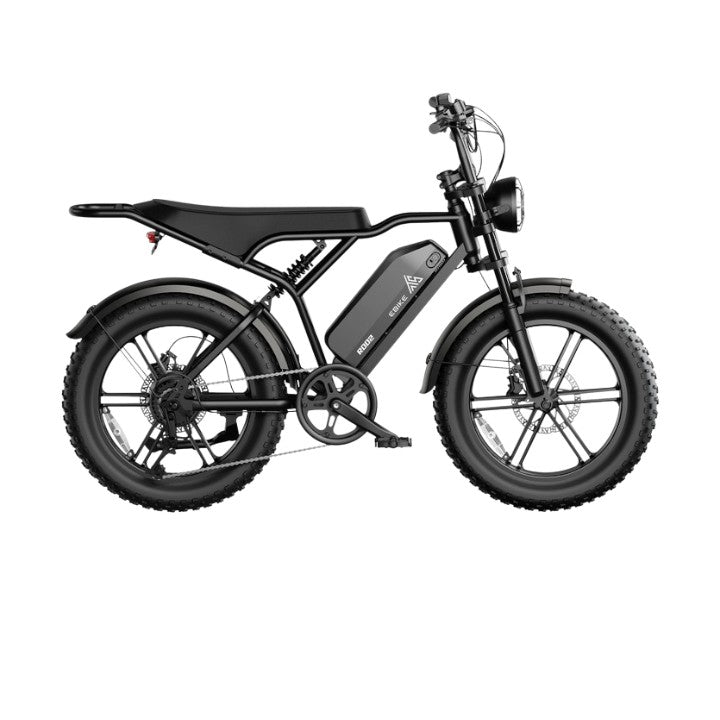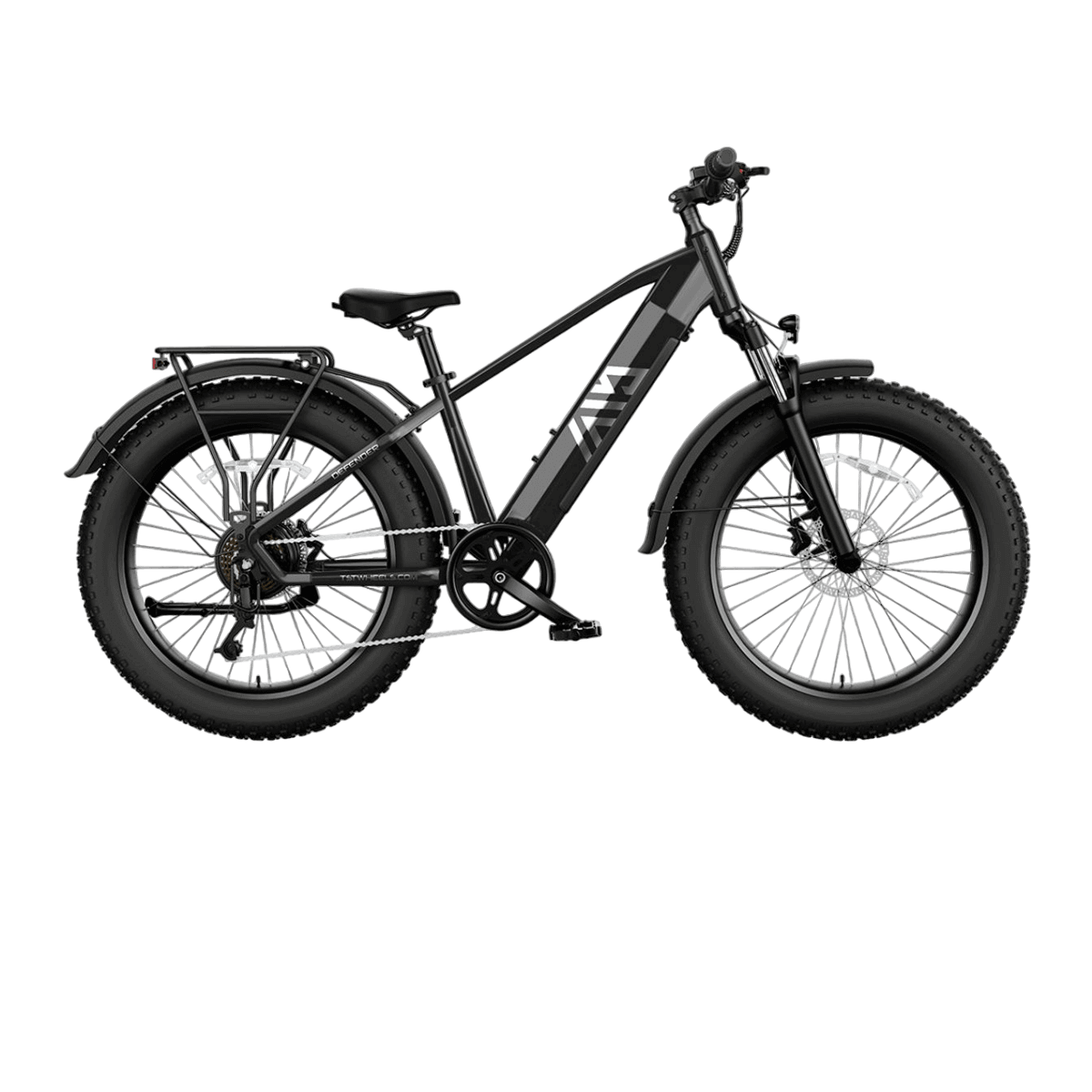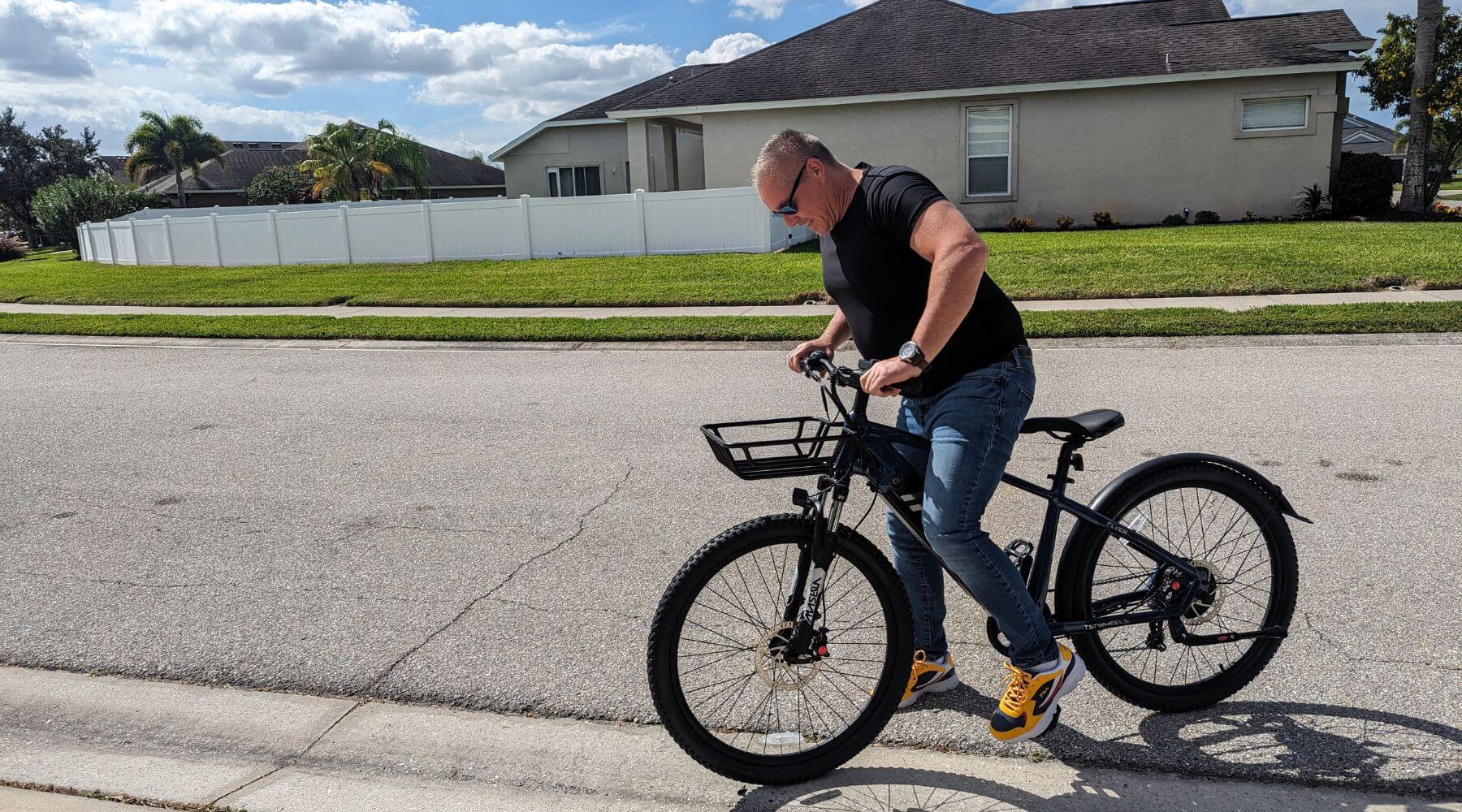Riding your ebike safely in wet weather is crucial to prevent accidents, protect your bike’s electrical components, and maintain control on slippery surfaces. Proper precautions like reducing speed, using lights, wearing waterproof gear, and adjusting tire pressure help ensure a safe, comfortable ride despite rain. Models like the TST Defender 26 and Dreamer 27 are designed for versatility but require mindful handling in wet conditions.
How Does Wet Weather Affect Ebike Riding Safety?
Wet weather reduces tire traction, lengthens braking distances, and increases the risk of skidding or slipping on painted lines, metal surfaces, and puddles. Water can also threaten electrical components if the bike is submerged or exposed excessively. Riding in rain demands slower speeds, smooth braking, and careful cornering to maintain control and avoid accidents.
What Are the Best Practices for Riding an Ebike Safely in the Rain?
Key best practices include:
- Slow down to increase reaction time and reduce slipping risk.
- Brake early and gradually using both front and rear brakes evenly to prevent wheel lockup.
- Avoid sudden turns and lean less into corners, making wider arcs.
- Ride straight through puddles without turning or braking mid-puddle to maintain balance.
- Increase following distance to allow more stopping space.
- Use front and rear lights for visibility in low-light, rainy conditions.
- Wear waterproof and reflective gear to stay dry and visible.
These strategies collectively enhance rider safety on wet roads.
Which TST EBike Models Are Best Suited for Wet Weather Riding?
The TST Defender 26-inch model, with its fat tires, offers superior traction on wet and rough terrains like sand and mud, making it a strong choice for rainy rides. The 27-inch Dreamer model, designed for daily commuting and mountain biking, performs well on mixed urban and trail surfaces but requires careful handling in wet conditions. Both models feature hydraulic disc brakes and durable frames that help maintain control and safety in rain.
Chart title: TST EBike Models and Wet Weather Suitability
| Feature | Defender 26-inch Model | Dreamer 27-inch Model |
|---|---|---|
| Tire Type | Fat tires (26” x 4”) | Standard tires (27”) |
| Terrain Handling | Excellent on wet, rough terrain | Good on wet urban and trails |
| Brakes | Hydraulic disc brakes | Hydraulic disc brakes |
| Wet Weather Suitability | High | Moderate |
How Should You Prepare Your Ebike for Riding in Wet Conditions?
Preparation steps include:
- Installing fenders to prevent water spray on rider and components.
- Checking that electrical connections are sealed and dry.
- Lowering tire pressure slightly to increase traction on slippery surfaces.
- Inspecting tires for adequate tread depth to maintain grip.
- Ensuring brakes are in good condition and responsive.
- Cleaning and drying your ebike after wet rides to prevent corrosion.
Chart title: Preparation Checklist for Wet Weather Ebike Riding
| Preparation Step | Purpose |
|---|---|
| Install Fenders | Protect rider and bike from spray |
| Check Electrical Seals | Prevent water damage |
| Adjust Tire Pressure | Improve traction |
| Inspect Tires | Ensure grip on wet surfaces |
| Maintain Brakes | Reliable stopping power |
| Clean After Ride | Prevent corrosion and wear |
What Precautions Should You Take While Riding Your Ebike in the Rain?
Precautions include avoiding deep puddles that could submerge the motor or battery, steering clear of painted road markings and metal surfaces, and stopping riding immediately if lightning or severe storms occur. Wearing bright, reflective clothing increases visibility to motorists, and using lights on your ebike enhances safety in low-visibility conditions.
Why Is Proper Riding Technique Crucial on Wet Roads?
Proper technique-such as smooth acceleration, gradual braking, and gentle cornering-reduces the risk of losing traction and falling. Maintaining a centered weight distribution and avoiding sudden movements help keep control. Riding predictably and signaling intentions clearly also improves safety for both the rider and surrounding traffic.
Buying Tips
When preparing for wet weather riding, consider these tips:
- Choose ebike models like the TST Defender 26 with fat tires for enhanced wet traction or the Dreamer 27 for versatile urban and trail use.
- Invest in quality waterproof riding gear and reflective clothing for comfort and visibility.
- Equip your bike with front and rear lights rated for wet conditions.
- Use fenders compatible with your TST EBike model to reduce spray.
- Purchase a reliable pump and tire pressure gauge to adjust tire pressure as needed for wet terrain.
Electric bicycles make green commuting a breeze. But when showers strike, questions arise around whether ebikes can handle slippery, rainy rides. Rest assured that today's ebikes perform wonderfully in wet conditions with proper precautions. By following key gear, riding, and maintenance tips, you can safely enjoy the benefits of ebikes despite the rain.
Modern ebikes feature sealed electrical components that withstand wet weather. Combined with common sense adjustments to speed, braking, and handling, wet conditions need not deter ebike travelers. With the right preparation, you can pedal through puddles and slippery streets while staying comfortable and secure.
We've compiled everything you need to know to embrace rainy day ebike trips. Learn how ebikes are designed for all-weather riding. Pick up smart gear recommendations specialized for wet journeys. Discover pro techniques for improved stability, visibility, and traction on slick surfaces. And get tips for keeping your ebike running smoothly long after the storm passes.
With this complete guide, we aim to dispel concerns over riding ebikes in the rain. Drizzle and downpours should only enhance the adventure! Confident, savvy riding opens up new opportunities to zip around town with zero emissions regardless of the forecast.
Are Electric Bikes Designed for Wet Weather Riding?
Yes, most electric bikes are built with water-resistant components, allowing for safe riding in light to moderate rain. However, they are not fully waterproof; avoid submerging the motor or battery in water. Always check your e-bike's IP rating and manufacturer guidelines before riding in wet conditions.
Ebikes are built to handle riding in the rain thanks to their sealed electrical components. The batteries, controllers, motors and wiring are all contained within casings that prevent moisture from getting in and causing issues like short circuits.
As long as you avoid submerging the bike in deep puddles or streams, the watertight fittings and connections on today's electric bikes allow them to be pedaled through wet conditions. Extensive water exposure can still cause problems though, so caution is needed when riding in heavy rainfall.
What Clothing and Gear Should You Wear?
For wet weather cycling, wear waterproof jackets, pants, and gloves to stay dry. Use moisture-wicking base layers and waterproof shoe covers to maintain comfort. Bright or reflective clothing enhances visibility to others on the road.
Having the right clothing and gear will keep you comfortable and safe when riding an ebike in the rain.
Always wear a rain jacket made of waterproof fabric or with a waterproof coating. This essential outer layer keeps your upper body and core dry. Sleeves with elastic or velcro cuffs help seal out the elements. Bright colors enhance daytime visibility while reflective detailing helps keep you seen in low light rain.
Waterproof pants, bibs, or rain chaps are also recommended for protecting your legs and lower body from road spray. Shoes or boots designed for cycling have grippy soles to prevent slipping on slippery pedals when wet. To keep hands warm and dry, water-resistant gloves with good dexterity work best.
Don't forget eye protection like glasses or goggles to shield your eyesight and increase visibility. A helmet is also vital for safety. For extreme conditions, a waterproof helmet cover provides extra protection.
Finally, use quality base layers made of merino wool or synthetic moisture-wicking fabrics so sweat and humidity can transfer away from your skin. Avoid cotton which absorbs water and stays damp.
Accessories and Upgrades for Wet Weather Cycling
Equip your e-bike with full-coverage fenders to reduce splash, and install bright front and rear lights for visibility. Waterproof panniers or bags protect your belongings, and wider tires can improve traction on wet surfaces.
Adding a few bike accessories tailored for rain can make your ride safer and less stressful.
Mudguards (also called fenders) are a must for keeping dirty road spray from coating you and your bike's components in grime. Full-length fenders provide the best coverage.
Waterproof panniers or a handlebar bag protect your cargo and supplies from getting soaked. A rear rack bag also keeps your back dry.
Headlights and taillights become especially critical for visibility on gloomy, low-light days. Powerful front lights help you see the road ahead.
Disc brakes offer reliable stopping power in wet conditions compared to rim brakes which can lose responsiveness when wet. Electric bikes with good quality hydraulic disc brakes provide extra control for safe slowing and stopping.
Portable tire traction aids that attach to your shoes or tires supply added grip if riding through snow or heavy rain. These mini cleats dig into slippery surfaces for stability.
How to Ride Safely in the Rain
Ride cautiously by reducing speed and avoiding sudden movements. Brake earlier and gently to prevent skidding, and steer clear of puddles and slick surfaces like painted lines. Ensure your lights are on to increase visibility to others.
Riding in the rain requires extra care and preparation. Here are essential tips for safe riding technique when cycling your ebike in wet, slippery conditions:
- Slow Down - Reduce your speed to adapt to lowered traction and braking power on wet ground. Accelerate and turn gradually.
- Scan Ahead - Look further down the road to anticipate puddles or hazards. Avoid fixing your gaze right in front of your wheel.
- Increase Following Distance - Leave ample room to come to a controlled, full stop behind other vehicles.
- Brake Earlier - Allow for longer braking distance on slick roads. Gently brake intermittently rather than all at once.
- Avoid Road Paint/Metal - Cross painted lines and manhole covers at 90 degree angles to prevent sliding.
- Use Caution Through Puddles - Roll through standing water cautiously. Hidden potholes or debris can cause crashes.
- Lower Tire Pressure - Decreased pressure adds traction. Larger volume mountain bike tires also grip better than narrow road tires.
- Relax Muscles - Staying relaxed and using your legs as shock absorbers smooths out the ride.
- Use Clear Hand Signals - Indicate turns well in advance so trailing vehicles can react accordingly.
Perform Regular Maintenance for Protection
After riding in the rain, dry your e-bike thoroughly, especially the chain and electrical contacts. Apply a wet-weather lubricant to the chain to prevent rust, and check for any water ingress in the battery or motor areas.
Consistent bike maintenance safeguards your ebike from any damage that could occur from riding in wet weather for long periods.
Lubricate the chain frequently as rain washes away oil, leading to rust. Apply corrosion protection spray to all metal surfaces.
Check brake pads for wear and replace them promptly when overly worn. Disc brake rotors can also rust from rain exposure.
Inspect tires for embedded road debris like glass or nails that accelerate punctures. Maintain proper inflation levels.
Remove the battery after wet rides. Fully dry the battery housing and connectors to prevent shorts, fires or other electrical issues.
Avoid using pressure washers for cleaning. Instead, hand wash gently with mild soap then dry entirely with a towel. Never leave an ebike wet for storage.
By following these tips and using common sense, electric bike riders can continue to reap the benefits of cycling no matter the weather. Don't cut your ebike commute short just because of a little rain. With the proper wet weather gear and safe riding techniques, you can pedal through downpours while staying comfortable, secure and drier than you'd expect.
Take Your First Electric Bike Adventure with TST Ebike
TST Ebikes are designed with water-resistant features suitable for various weather conditions. Before your first ride in the rain, familiarize yourself with your e-bike's capabilities and maintenance requirements to ensure a safe and enjoyable experience.
Electric bikes offer the ideal blend of cycling enjoyment and modern convenience. As ebikes grow in popularity for urban transportation, exercise, and adventure, smart shoppers turn to proven industry leader TST.
With deep expertise cultivated over years in the ebike world, TST team can answer all your questions and match you with your perfect model. Our stylish, nimble ebikes built for life in motion put confidence and comfort in each ride.
Make TST your trusted ebike source. Our lineup of speedy, sleek electric bikes simplifies and energizes daily commuting and exploration. Join the emobility revolution on two wheels backed by TST's dedication to customer satisfaction. Contact us to get rolling toward a bright new ebike life today.












Leave a comment
All comments are moderated before being published.
This site is protected by hCaptcha and the hCaptcha Privacy Policy and Terms of Service apply.